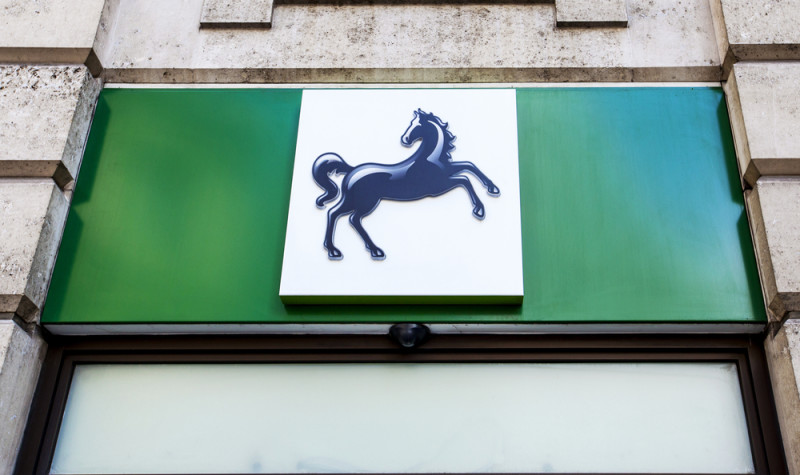Lloyds Banking: A Brexit Bargain?

Bank shares await the verdict of post-Brexit economic history. The share price chart for Lloyds at 54p gives little guidance. However, well capitalised and on above-average earnings and dividend yields (an estimated 13.6% and 7.4% consensus last seen) the shares look a hold and a speculative buy for those who take a more cheerful view of Brexit Britain. The shares appear good value on an historic 10 per cent discount to assets.
Earlier this year, after last year’s published results when the share price was 72p, I thought these shares to be good value on the basis of market consensus earnings estimates and the above average prospective divided yield. Should I still feel that way in the Brave New World ex EU membership?
Looking first at the increasingly problematic market consensus estimates, just a month after the fateful referendum, may not be all that useful because we do not know what it all means for banks in general and Lloyds in particular. However, an inability to foresee future events is nothing new and creates the opportunity for making capital gains, which depends on a truly imperfect market in which the one eyed man is always either king or aspiring political party leader. As the great Gove said (strangely in the manner of Robespierre or Trotsky) “The people have grown tired of experts.”
In the months leading to Brexit Day on 23 June 2016, the Lloyd’s share price had been trading between 65p and 72p. After Brexit, it plunged from there down to around 48p, from which it has in part recovered to 55p last seen. Going back, the share price had peaked at around 89p in May 2015, starting a fairly volatile downtrend from that point before it crashed though the bottom of the trading range.
Lloyds’ share price is some 38 per cent off the May 2015 high and up some 15 per cent from its recent post-Brexit depths. The only share price chart pattern that I am able to discern is a short-term one, possibly suggesting a short-term trading range of between 50p and 72p whilst the market tries to work out the frankly yet unknowable macro implications of disruption to the nation’s trading arrangements.
The best that we can do in those circumstances is to work out what defensive value or otherwise the share now has with which to face the slings and arrows of outrageous fortune.
The first basic fact about Lloyds bank is that it is now mainly a UK retail bank, after having thrown out any interest it might have harboured to become an all singing, all dancing, universal service investment bank. So its fortunes may be seen in terms of what happens here in the UK.
It has the advantage of scale in the UK where it reportedly has some 30 per cent share of the UK market. Its first difficulty as a retail bank must be any further lowering of interest rates, because such a move would reduce its scope for making profits between the rate paid to depositors and interest charged to borrowers – even when the deposit rates are almost invisible. The second difficulty will come from any reduction in economic demand in the UK. Given the significant depreciation of the sterling exchange rate, citizens – particularly the poorest – will have less to spend after they have settled higher energy and transport costs.
Here, we need to watch the consumer price index. Until Brexit day, real spending power was rising as wages were rising faster than inflation. That prospect now appears to be dead. All earlier earnings forecasts are now off the table and it is too early to confidently replace them with something palpable.
So what attractions does Lloyds have at this stage? First, although the share price stands at a discount to net assets, it is only by some ten percent. That is small in relation to the much bigger discounts enjoyed by international UK investment banks like Barclays and HSBC.
The devaluation of sterling is most likely to favour the investment banks with corporate and share dealing activities, as we have seen with the sudden move on Arm Holdings, which suddenly became very cheap in Japanese Yen terms. If overseas competitors are not already placing the acquisition tape measure over UK targets, we may be sure that merger and takeover chums in the City and elsewhere will already have done it in the hope of drumming corporate business. That may lead to a worsening of the UK’s balance of trade deficit – last reported as a yawning gap of between 6 – 7 per cent of UK GDP – but will probably give rise to increased City bonuses to offset the otherwise deflationary effect of devaluation. Lloyds are unlikely to benefit much from that development, although headline economic news about wages and earnings in the UK will probably have some positive effect on sentiment some months down the line.
Lloyds also has a high Basel Tier 1 capital ratio of 12.8 per cent of its total risk weighted capital. The impression has been gained by observers that, under the late Chancellor, banks had persuaded the government to ease up on capital raising requirements.
Proceeding from the particular to the general, it should not be forgotten that UK banks are in an incomparably stronger position than they were in 2008 (the onset of the world banking crisis) and are currently and seemingly in a better capital adequacy position than EU banks, which have reputedly not been re-capitalised to the same extent as the UK and US banks.
Comments (0)